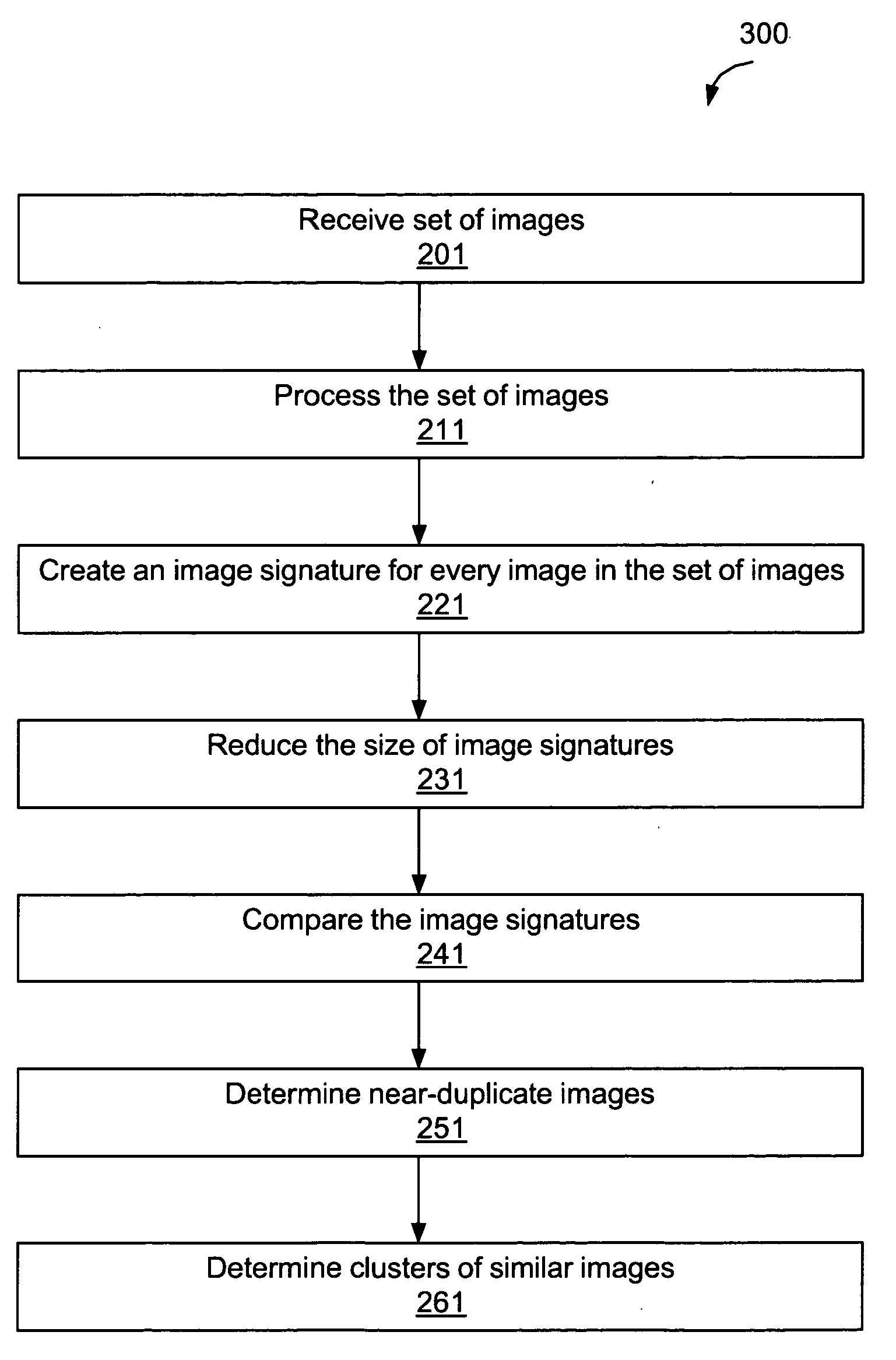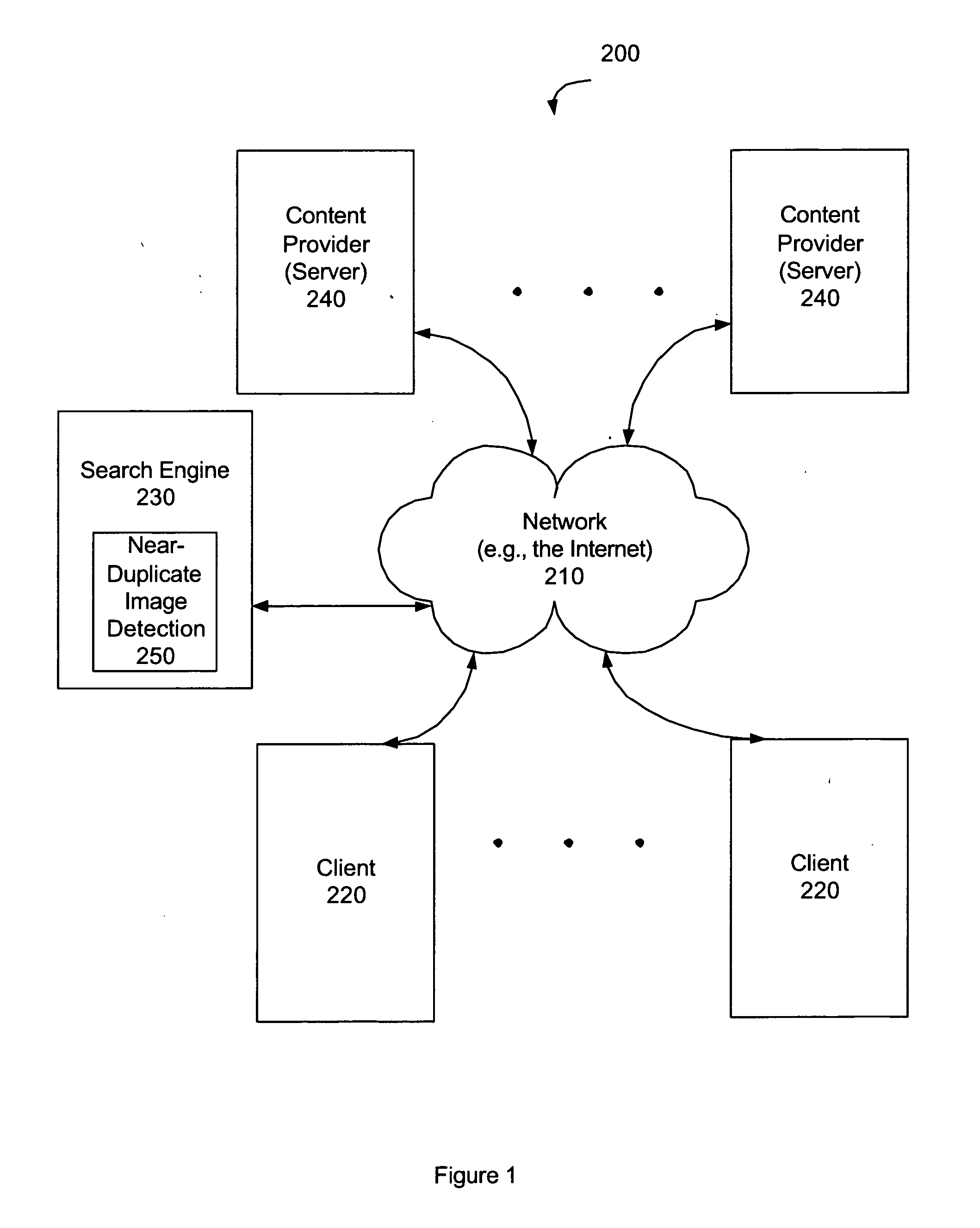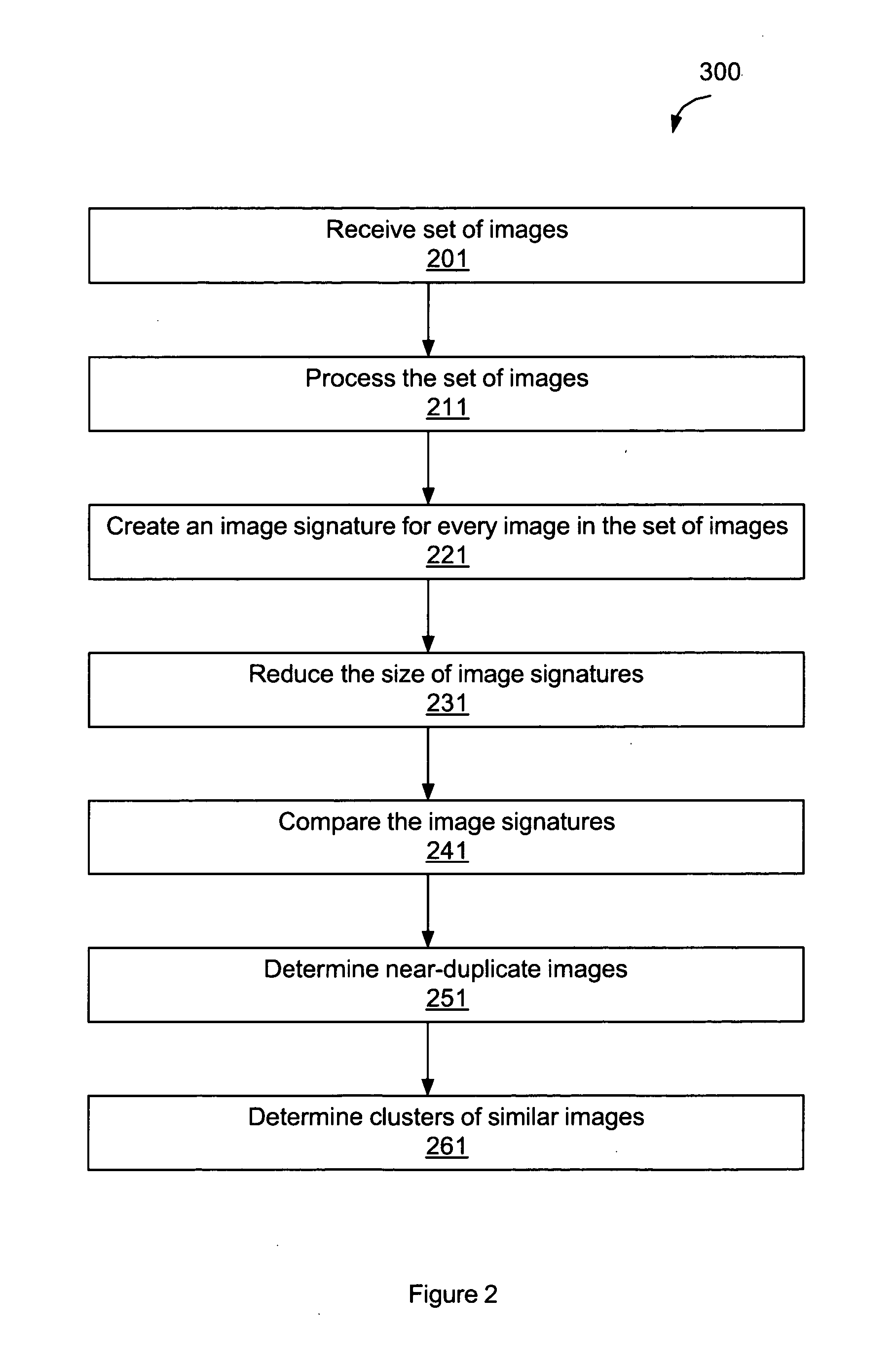Similarity detection and clustering of images
a technology of similarity detection and image clustering, applied in the field of information management and retrieval, can solve the problems of user searching for images, wasting resources on search engines, and determining whether a web site is relevant to a particular topi
- Summary
- Abstract
- Description
- Claims
- Application Information
AI Technical Summary
Problems solved by technology
Method used
Image
Examples
Embodiment Construction
[0024] A method and apparatus for detecting near duplicate images in a collection of images are described. As described further below, in certain embodiments of the invention, the method includes generating image signatures for each image in the collection of images and comparing the signatures to determine a level of similarity between images or groups of images. Various methods for reducing computational costs of detecting near duplicate images are also described.
[0025]FIG. 1 is a high-level block diagram of an environment 200 in which at least some aspects of the present invention may be used. This environment 200 may include a network (such as the Internet, for example) 210 that enables users to access content provided by one or more servers 240 coupled via one or more communication networks. The data may be stored in files on the servers 240 and may be accessed by users using client systems 230 coupled to the servers 240 to the communication networks. The term “client system” ...
PUM
 Login to View More
Login to View More Abstract
Description
Claims
Application Information
 Login to View More
Login to View More - R&D
- Intellectual Property
- Life Sciences
- Materials
- Tech Scout
- Unparalleled Data Quality
- Higher Quality Content
- 60% Fewer Hallucinations
Browse by: Latest US Patents, China's latest patents, Technical Efficacy Thesaurus, Application Domain, Technology Topic, Popular Technical Reports.
© 2025 PatSnap. All rights reserved.Legal|Privacy policy|Modern Slavery Act Transparency Statement|Sitemap|About US| Contact US: help@patsnap.com



